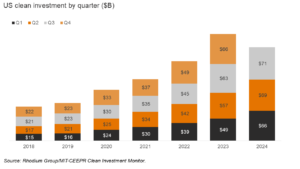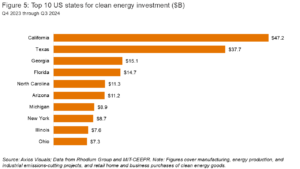BIO
Ed Bossange is the Chief Capital Formation Officer at Generate Capital. Ed brings more than 10 years of experience in renewable energy and project finance.
Prior to Generate, he was a vice president of origination and structuring at Morgan Stanley, where he sat in the North America Power and Gas business on the commodities trading floor, investing the firm’s balance sheet into renewable energy assets. He spent more than six years at Morgan Stanley, primarily focused on originating, acquiring, developing, and financing solar PV projects across residential, commercial, industrial, and small utility scale, which included playing an integral role in more than $200 million of the first community solar portfolios institutionally financed in the United States. Ed began his career in renewable energy as a design engineer for both solar PV and solar hot-water-system integration in New York City. Ed holds an MS in Mechanical Engineering‐Energy Systems from Columbia University and a BS in Mathematics from Hamilton College.
BIO
Jonah is the Head of External Affairs and Impact at Generate where he oversees our communications, government engagement, and impact assessment and strategy.
Prior to Generate, Jonah led Breakthrough Energy a network founded by Bill Gates including investment funds, nonprofit and philanthropic programs, and policy efforts linked by a common commitment to scale the technologies we need to achieve a path to net zero emissions by 2050. During that time, he also served as Mr. Gates’s senior advisor for policy and government relations. Prior to Breakthrough Energy, Jonah spent nearly 15 years in Washington, D.C., leading integrated advocacy, communications, and grassroots campaigns. He led a series of policy efforts on a variety of issues – from civil rights to education reform to nuclear non-proliferation. Before that, he served as primary spokesperson and chief strategist for the largest national campaign to protect voting rights. Jonah holds a J.D. degree from Boston College Law School and a B.A. degree in History from Binghamton University. Jonah lives in Seattle with his wife Jackie and his two children, Desmond and Fiona.
Investors and banks are voting for the infrastructure transition with their dollars
The latest numbers behind the energy transition
A roundup of energy transition policy headlines
Our favorite articles and reports from the last month
Welcome to the Generate: Intelligence November Newsletter. We’re bringing you top climate and energy transition news and analysis from across North America.
Expert View

By the numbers
Q3 2024 garnered the highest-ever quarterly investment in the US clean energy and transportation sectors. According to the latest analysis from the Rhodium Group and MIT, July through September saw $71 billion in clean investment, a 12% increase from Q3 2023. Surging sales for zero-emission vehicles helped drive the growth, with investment in the retail sector increasing 9% quarter-over-quarter (Clean Investment Monitor).

The latest clean investment data also reveals where private and public dollars are flowing. The 10 states that received the most investment dollars saw a combined $170 billion in the last year – and nearly two-thirds of that funding went to states with majority Trump/GOP voters. These figures provide a more complete picture of the US energy transition and highlight the existing tension between political rhetoric and economic reality as the incoming GOP Congress weighs rolling back the IRA (Axios).

In 2020, 4% of cars sold in Mexico were built in China. This year, Chinese-made cars account for one in three car sales in Mexico – totaling nearly 500,000 vehicles. And Mexico hasn’t only been focused on bringing cars into the country: in 2023, Mexico exported a record 2.2 million cars to the US. These numbers illustrate how Mexico has become a key player in the US-China EV tariffs battle. They call into question both how the US will prevent entry of Chinese-made EVs through its Southern border and the future of the USMCA more generally. Trump has announced he plans to impose a 25% tax on products from Mexico and Canada, and an additional 10% tariff on goods from China, as soon as he takes office (AP). Michael Dunne shares a deep dive into how and why Mexico found itself in this position, and what happens now in his latest Substack (link).

Georgia Power announced its projected load growth for the next decade increased by over 12,000 MW to 36,500 MW. The utility’s projected load for 2028 to 2029 alone grew by 3x, largely due to planned data center expansion. 3,300 MW worth of data centers are currently under construction in Georgia, with another 4,100 MW in the state’s pipeline (Heatmap 🔒).
Policy & regulatory highlights
Several states had climate change and energy transition-related initiatives on the ballot on Election Day. Voters in Washington state rejected a ballot initiative that would have repealed the state’s carbon cap (PoliticoPro 🔒). Meanwhile, voters in California approved a ballot measure allowing the state to borrow $10 billion to fund wildfire prevention, flood protection, and other climate resilience projects (PoliticoPro 🔒).
The Biden administration continues to carry out its climate agenda in its final sprint before the looming administration change. The Department of Energy announced up to $2.2 billion in awards commitments for hydrogen hubs to help kickstart the nascent hydrogen market (DOE, PoliticoPro 🔒). The EPA finalized a rule setting fees for methane emissions from oil and gas companies (EPA, E&E News 🔒).
Federal banking regulators announced they would not finalize the proposed Basel III endgame rules – which would raise capital requirements on big banks – before Biden leaves office. The move opens the door for the Trump administration to rewrite or abandon the proposed financial regulations (PoliticoPro 🔒).
A Texas transmission law, which gives incumbent utilities the exclusive right to build transmission lines connecting to their systems, was deemed unconstitutional by a US district court (Utility Dive). A collection of counties and towns in Michigan are appealing the state’s new renewable energy siting law, arguing that the law oversteps statute by giving primary authority to the Michigan Public Services Commission. The legal battle could be a bellwether for other US permitting reform efforts (Heatmap 🔒).
The US Court of Appeals ruled that the National Environmental Policy Act (NEPA) does not carry the force of the law. The ruling could fundamentally shift how environmental permitting works across the US, if the administration appeals and if it’s upheld by higher courts (E&E News 🔒).
What we're reading
Global solar generation in 2024 has already outpaced 2023’s total of 1500 TWh (Ember, X). Nat Bullard explains how a mismatch in analytical approaches and a failure to incorporate a theory of change lead to clean power installations routinely exceeding forecasts (link).
Richard Kauffman on “the grid of the future” (link 🔒)
The fourth piece in Christian Okoye’s series on FOAK data, which centers on nuclear power (link)
Northvolt’s tale (link)
RMI: Tracking the heat pump and water heater market in the US (link)
Energy News Weekly’s roundup of notable climate-related election outcomes (link)
SAF or CDR (link)
Hannah Ritchie on AI energy demand (link)
A running list of Trump’s Cabinet picks (link)
CTVC’s take on the UN’s biggest move at COP29: carbon credits (link)
Heatmap on the death of the term “climate tech” (link)
Something’s going to break, we just don’t know what (link)
Contributors

Edward Bossange
Chief Capital Formation Officer

Jonah Goldman
Head of External Affairs and Impact
More newsletters
October 2025 Newsletter
Trade policy and House tax bill implications, and more US energy and infrastructure news and analysis
Read moreSeptember 2025 Newsletter
Reflections on RE+ and Climate Week, the role of private credit, who to blame for high electricity prices and a cool Texas summer.
Read moreAugust 2025 Newsletter
Solar investment figures, PPA wariness, and more US energy and infrastructure news and analysis
Read more